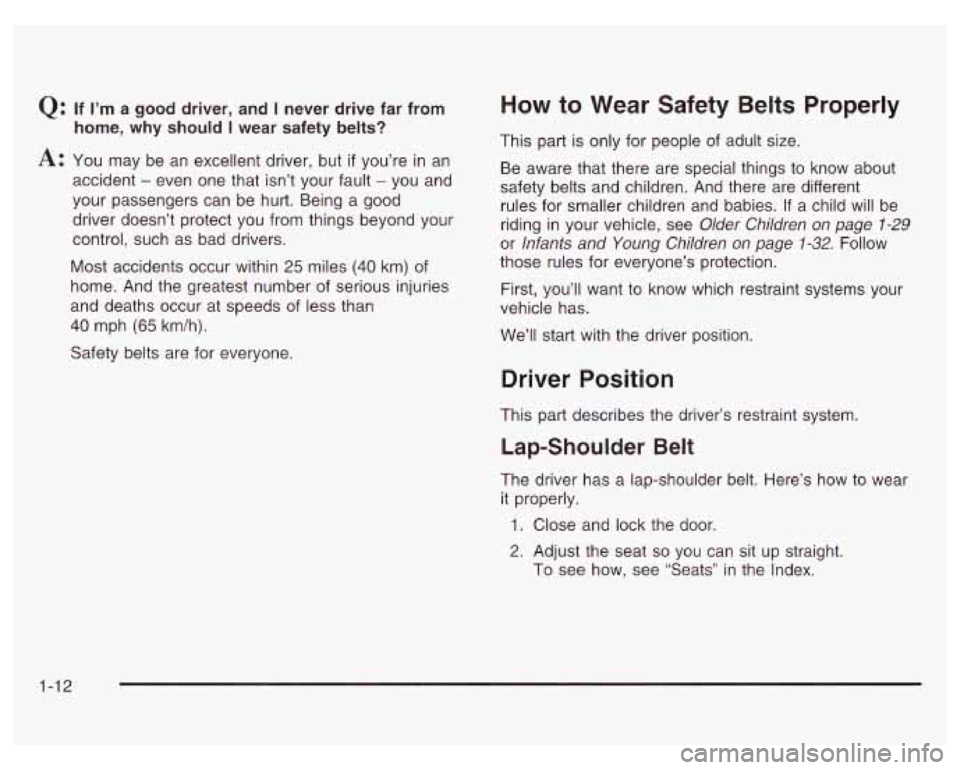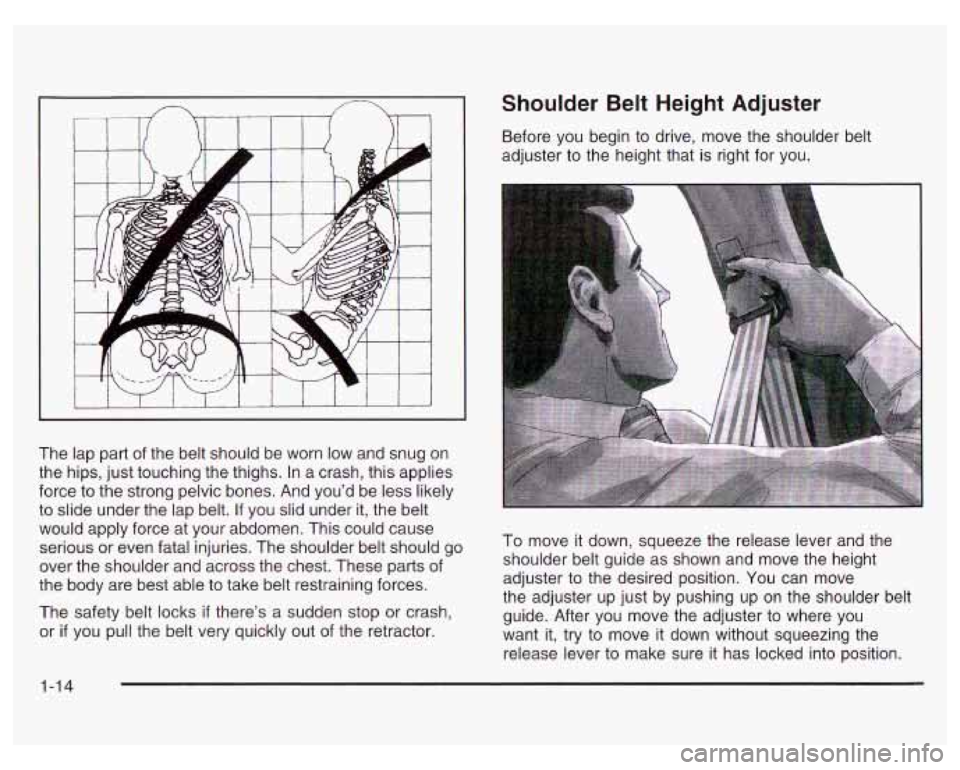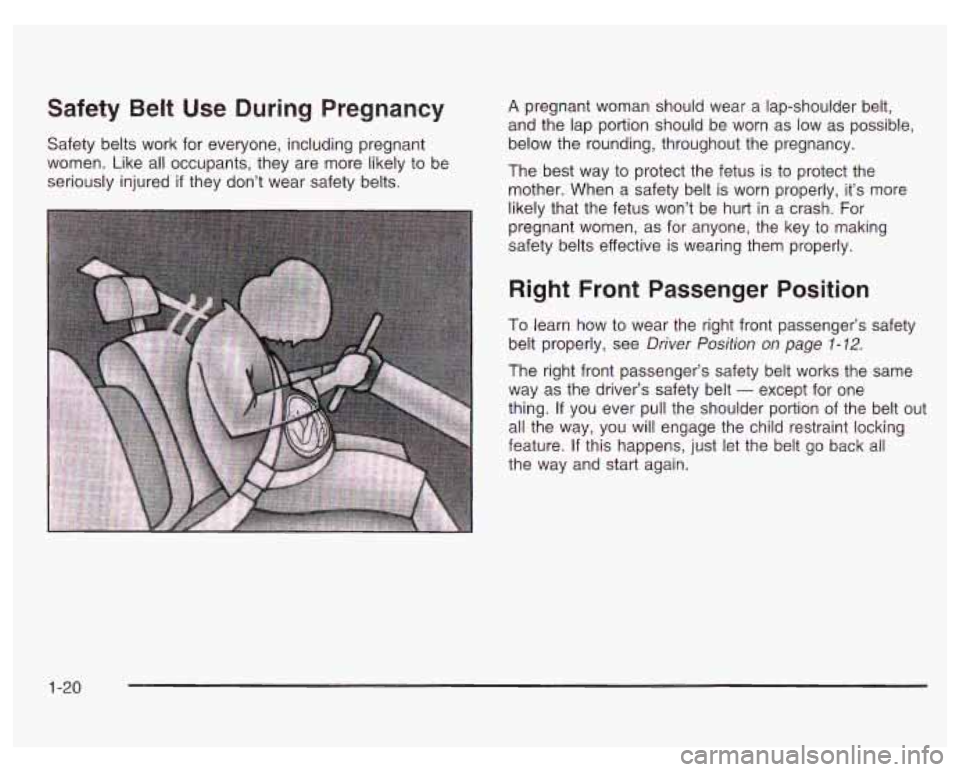Page 2 of 378

The 2003 Pontiac Grand Prix Owner Manual a
Seats and Restpaint Systems ........................... ? -1
Front Seats ............................................... 1-2
Safety Belts
.............................................. 1-7
Child Restraints
....................................... 1-29
Supplemental Restraint System
(SRS) ......... 1-51
Restraint System Check
............................ 1-58
Keys
........................................................ 2-3
Doors and Locks
....................................... 2-8
Windows
................................................. 2-1 3
Theft-Deterrent Systems
............................ 2-1 5
Starting and Operating Your Vehicle
........... 2-19
Mirrors
.................................................... 2-33
Onstar@ System
...................................... 2-38
Storage Areas
......................................... 2-40
Sunroof
.................................................. 2-42
Vehicle Personalization
............................. 2-43
Instrument Panel Overview
.......................... 3-2
Climate Controls
...................................... 3-20
Warning Lights, Gages and Indicators
......... 3-23
Driver Information Center (DIC)
.................. 3-38
Trip Computer
......................................... 3-40
Audio System(s)
....................................... 3-44
Features and Controls ..................................... 2-1
Instrument Panel ............................................. 3-1
~rivingi yoerr Vehicle ....................................... 4-1
Your Driving, the Road, and Your Vehicle
..... 4-2
Towing
................................................... 4-33
Service
..................................................... 5-3
Fuel
......................................................... 5-5
Checking Things Under the Hood
............... 5-10
Headlamp Aiming
..................................... 5-59
Bulb Replacement
.................................... 5-60
Windshield Wiper Blade Replacement
......... 5-67
Tires
...................................................... 5-68
Appearance Care
..................................... 5-88
Vehicle Identification
................................. 5-96
Electrical System
...................................... 5-97
Capacities and Specifications
................... 5-1 02
Normal Maintenance Replacement Parts .... 5-1 04
Maintenance Schedule ........................... ,6-1 ..
Maintenance Schedule ................................ 6-2
Customer Assistance Information .................... 7-1
Customer Assistance Information
.................. 7-2
Service and Appearance Care .......................... 5-1
Reporting Safety Defects
......................... 7-9
Index ........................................ ..... 1
Page 6 of 378
These are some examples of vehicle symbols you may find on your vehicle:
POSSlBLE A
CAUTION
INJURY
PROTECT EYES BY
SHIELDING
CAUSTIC
BAlTERY
4CID COULD CAUSE
BURNS
AVO1
D
SPARKS OR
FLAMES
SPARK OR FLAME
\\I/'
COULD
EXPLODE BAlTERY LATCH BOTH LAP AND
SHOULDER BELTS
TO
PROTECT OCCUPANT 4
DO NOT TWIST SAFETY
BELT WHEN AlTACHING
FASTEN SEAT
BELTS
MOVE SEAT FULLY
\!$%
REARWARD* /z
SECURE
CHILD SEAT
PULL BELT
COMPLETELY
THEN SECURE CHILD SEAT
TI POWER
WINDOW DO NOT INSTALL
A REAR-FACING
CHILD RESTRAINT IN THIS SEATING POSITION
DO NOT INSTALL A
'ORWARD-FACING CHILD RESTRAINT IN THIS SEATING
POSITION
DOOR LOCK
UNLOCK
L
LlGHTlNG - MASTER SWITCH e- / ,
SIGNALS TURN
PARKING
pf
LAMPS
RUNNING LAMPS
LAMPS
so
ENGINE
COOLANT TEMP
CHARGING BAlTERY
SYSTEM
COOLANT
d
ENGINE OIL PRESSURE
Wb
ANTI-LOCK (@)
BRAKES ENGINE
COOLANT FAN
OWNERS MANUAL
SERVICE
MANUAL
Page 9 of 378
Front Seats
Manual Seats
You can lose control of the vehicle if you try to
adjust a manual driver’s seat while the vehicle
is moving. The sudden movement could startle
and confuse you, or make you push
a pedal
when you don’t want to. Adjust the driver’s
seat only when the vehicle is not moving.
If your vehicle is equipped with manual seats, lift the
lever, located under the front
of the seat, using a twisting
motion. This will unlock the seat. Slide the seat to
where you want it and release the lever.
Try to move
the seat back and forth to make sure the seat is locked
in place.
1 -2
Page 11 of 378
Heated Seats
If your vehicle is equipped
with this feature, the heated seat switch is
located on the center
console, behind the
open storage bin.
Reclining Seatbacks
The recliner lever for the driver’s and passenger’s front
seatback is located on the outboard side of each
front seat cushion.
Press
LO to warm the seat to a lower temperature.
Press
HI to warm the seat to a higher temperature.
To turn this feature
off, place the switch in the center
position. This feature only works when the ignition
is turned on.
Lift the lever to release the seatback, then move the
seatback
to where you want it. Release the lever to lock
the seatback in place. Pull up on the lever without
pushing on the seatback and the seatback will move
forward.
1 -4
Page 19 of 378

Q: If I’m a good driver, and I never drive far from
A: You may be an excellent driver, but if you’re in an
accident
- even one that isn’t your fault - you and
your passengers can be hurt. Being a good
driver doesn’t protect you from things beyond your
control, such as bad drivers.
Most accidents occur within
25 miles (40 km) of
home. And the greatest number of serious injuries
and deaths occur at speeds of less than
40 mph (65 km/h).
Safety belts are for everyone.
home, why should I wear safety belts?
How to Wear Safety Belts Properly
This part is only for people of adult size.
Be aware that there are special things
to know about
safety belts and children. And there are different
rules for smaller children and babies. If a child will be
riding in your vehicle, see Older Children on page
1-29
or Infants and Young Children on page 1-32. Follow
those rules for everyone’s protection.
First, you’ll want to know which restraint systems your
vehicle has.
We’ll start with the driver position.
Driver Position
This part describes the driver’s restraint system.
Lap-Shoulder Belt
The driver has a lap-shoulder belt. Here’s how to wear
it properly.
1. Close and lock the door.
2. Adjust the seat
so you can sit up straight.
To see how, see “Seats’’ in the Index.
1-12
Page 20 of 378
Make sure the release button on the buckle is
positioned
so you would be able to unbuckle the
safety belt quickly
if you ever had to.
3. Pick up the latch plate and pull the belt across you.
Don’t let it get twisted.
The shoulder belt may lock
if you pull the belt
across you very quickly.
If this happens, let the belt
go back slightly to unlock it. Then pull the belt
across you more slowly.
4. Push the latch plate into the buckle until it clicks.
Pull up on the latch plate to make sure it is secure.
If
the belt isn’t long enough, see Safety Belt Extender
on page 1-28 at the end of this section.
5. To make the lap part tight, pull down on the buckle
end
of the belt as you pull up on the shoulder belt.
1-13
Page 21 of 378

The lap part of the belt should be worn low and snug on
the hips, just touching the thighs. In a crash, this applies
force to the strong pelvic bones. And you’d be less likely
to slide under the lap belt.
If you slid under it, the belt
would apply force at your abdomen. This could cause
serious or even fatal injuries. The shoulder belt should go
over the shoulder and across the chest. These parts of
the body are best able to take belt restraining forces.
The safety belt locks
if there’s a sudden stop or crash,
or if you pull the belt very quickly out of the retractor.
Shoulder Belt Height Adjuster
Before you begin to drive, move the shoulder belt
adjuster to the height that is right for you.
To move it down, squeeze the release lever and the
shoulder belt guide as shown and move the height
adjuster to the desired position. You can move
the adjuster up just by pushing up on the shoulder belt
guide. After you move the adjuster to where you
want it, try to move it down without squeezing the
release lever to make sure it has locked into position.
1-14
Page 27 of 378

Safety Belt Use During Pregnancy
Safety belts work for everyone, including pregnant
women. Like all occupants, they are more likely to be
seriously injured
if they don’t wear safety belts.
A pregnant woman should wear a lap-shoulder belt,
and the lap portion should be worn as low as possible,
below the rounding, throughout the pregnancy.
The best way to protect the fetus is to protect the
mother. When
a safety belt is worn properly, it’s more
likely that the fetus won’t be hurt in a crash. For
pregnant women, as for anyone, the key to making
safety belts effective is wearing them properly.
Right Front Passenger Position
To learn how to wear the right front passenger’s safety
belt properly, see
Driver Position on page 7-12.
The right front passenger’s safety belt works the same
way as the driver’s safety belt
- except for one
thing.
If you ever pull the shoulder portion of the belt out
all the way, you will engage the child restraint locking
feature.
If this happens, just let the belt go back all
the way and start again.
1-20